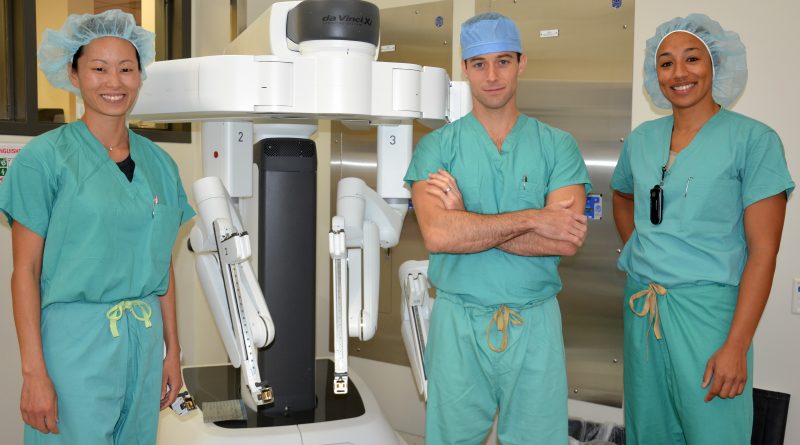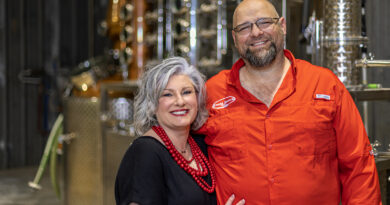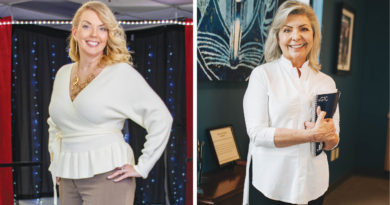Meeting Patient Needs
New Business Model Expands Access to Darnall’s Urology Services
Story and photography by GLORIA MONTGOMERY
Darnall Army Medical Center public affairs
Recent administration changes, additional doctors, more space and better equipment have contributed to nearly doubling access to care in Carl R. Darnall Medical Center’s urology clinic.
“In any one day, with our three active physicians, our numbers will be between 60-80 patients per day,” said urologist Maj. James Farrell, adding that those changes also were noticed by the Department of Defense who recognized them for their production successes.
Previously, the clinic was operating at half that capacity, partly because of patient accounting, limited capabilities, and low-volume patient load. Still, the clinic was within patient-access standards.
“We knew we could do better than what we were doing, so why not just be better?” said Dr. Farrell, who along with fellow urologists, Maj. Tara Ortiz and Dr. Hsiang Chi (Cathy) McLaughlin, began dissecting clinic operations. “The way to do that was to increase our access and improve our ability to take credit for the work we were already doing.”
Using civilian and military benchmarks that correlate patient care with revenue, the trio began rebuilding urology’s business model, one variable at a time, including factoring in patient cancellations. This bumped up the previous average of 12 patients per day per doctor.
According to Farrell, limited exam and procedural space, as well as outdated and unreliable equipment dictated patient load in the old hospital. For example, the clinic previously had just four or five working bladder camera scopes at any one time. Today, the clinic has nine. This required the Darnall urology team to refer their patients to the community network for care. That translated into lost revenue.
“Production is a numbers game,” said Dr. McLaughlin, a Darnall veteran who has been at the Fort Hood hospital for 12 years as both a soldier and a civilian. “If your doctors aren’t doing anything, you aren’t going to make any money.”
The clinic’s low patient count wasn’t just about lack of space and equipment: It also was about the lack of patients with urology issues. That all changed in 2016 when retirees were brought back into the network.
“The increased patient load immediately impacted clinic operations,” said Dr. Ortiz, Darnall’s urology chief.
The patient population explosion also exposed the team to urology issues more in line with civilian hospitals than the military’s younger and healthier population group.
“Since we’ve recaptured some of the retiree population, we’re seeing a broader range of urology issues such as prostate and kidney cancers,” Ortiz said.
New technology like robotics also has helped open the door to more patients.
“Our robotics capability has increased the number of complex surgeries we can do here,” said Farrell, adding that robotics is the surgery tool of choice in drainage reconstruction surgeries and prostate and kidney cancers.
But they said, none of this would have been possible without command support.
“We’ve a good collection of people who recognize that part of the mission here is to do a really good job of helping people get their healthcare,” Farrell said. “This has really helped us increase the amount of work we’re doing in large part by maximizing the time we can see people without hurting our team of nurses and medical assistants.”
According to Farrell, the additional space that enabled the clinic to do more procedures elevates safety. “The more work you do the safer and more efficient you are,” he said. “I can look at a patient and recommend a surgery option and be confident in telling that patient, ‘yep, we can take care of you, and you’re going to be fine.’”
Ultimately, the patient experience drives the team’s energy and not revenue.
“The care we provide is equal to, if not better, than our civilian counterparts,” McLaughlin said, adding that she feels military providers have a better understanding of their patients because of their shared experiences.
Overall, McLaughlin said, the increase in business units are a testament to the team’s dedication to their patients and their profession.
“It feels like the hard work we have done together as a group has come to fruition in a sense that we are more efficient,” she said. “We’re moving in the right direction.”




